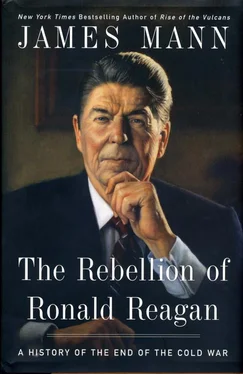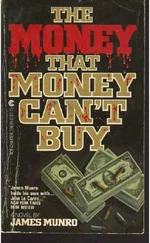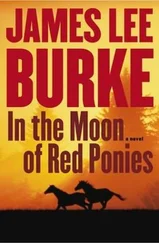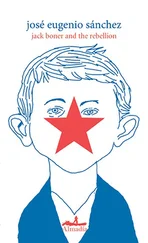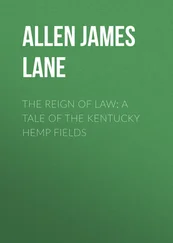Massie had been operating with remarkably little in the way of institutional backing. She held no formal academic position; she could claim only a loose affiliation, as fellow and visiting scholar, with Harvard’s Russian Research Center (now the Davis Center for Russian and Eurasian Studies). She was short of money. By her own logic, since she was already serving as presidential consultant and emissary, why not turn those activities into a salaried job? In mid-1986, Senator Bill Cohen and Senator John Heinz, two of her friends, suggested to Reagan that he hire her. “Her presence in the U.S.S.R. in an official capacity for your administration could provide a two-way conduit for promoting understanding and improved relations,” argued the two Republican senators in a letter to the president. 1
Their letter did not specify what job Massie should be given, but within months, Massie herself did. Her ambition was breathtaking. The administration had announced that Arthur Hartman, who had served as the U.S. ambassador in Moscow since 1981, would be coming home. Massie sought the nomination to replace him. “I want this job because I know that in this critical and exciting time of change in the Soviet Union, I can do this job for you better than anyone else,” Massie wrote in a note she sent directly to Reagan. She had badly miscalculated. While the appointment had not yet been announced, Reagan had already settled on his nominee by the time Massie’s note arrived, and it was an obvious choice: Jack Matlock, the NSC’s Soviet expert since 1983. 2
Reagan hurriedly sent Massie back a note, claiming that he had been “surprised” to get her request. “I had no idea that you would be interested in being ‘Our Man’ in Moscow,” the president wrote. Underneath the typed letter Reagan scrawled a postscript. “You really are a ‘trusted adviser…’ and I hope you’ll continue to be,” he said. 3
But soon Massie’s advisory role was called into question, caught up in the travails of the Reagan administration and the conflicts over Reagan’s diplomacy with Gorbachev. The Iran-Contra scandal burst forth in November 1986, exposing the National Security Council’s furtive operations to establish contacts with Iran and to obtain funds for rebel forces fighting Nicaragua’s leftist Sandinista government. Amid the unfolding investigations in Congress and at the Justice Department, Reagan brought in a new national security adviser, Frank Carlucci, and a new deputy, Colin Powell. They carried out a thorough housecleaning at the NSC, changing most of its personnel and imposing new orders that everything was to be done aboveboard and by the book. No secret operations and no “freelancing,” Powell warned the new NSC team. 4
Massie had no connection with Iran-Contra. Nevertheless, her ties to the Reagan White House had been established under the same two national security advisers, Robert McFarlane and John Poindexter, who had been responsible for the secret contacts with Iran. When Carlucci took over, he wasn’t worrying about Massie; he had far more serious concerns, above all trying to prevent what seemed like a possible collapse of the Reagan presidency. Nevertheless, Massie soon caught his attention.
On February 3, 1987, Massie arrived at the White House and had another one-on-one session with Reagan. At the time, he was reported to be in seclusion, with his administration in disarray. Over the previous week, a Senate select committee had issued its first public report on Iran-Contra, and the ailing CIA Director William Casey had resigned. That day, Massie spoke with Reagan for only five minutes, but she handed him a handwritten message she had obtained in Moscow, one that was said to have come from Mikhail Gorbachev. Reagan dispatched Massie and her note over to Secretary of State George Shultz at the State Department. “I know that you are seeing Suzanne Massie this evening,” Reagan wrote. “She delivered this handwritten note from Gorbachev. He asked her to deliver this to me personally.” 5
Massie had been talking frequently to Bogdanov in Moscow. “Occasionally, I was given little missives for Reagan, always worded carefully and from the top,” she said. The note Massie was carrying on this occasion suggested some form of Soviet-American agreement for “national reconciliation” in Afghanistan, one that would open the way for an end to the war Soviet troops were fighting there. Reagan told Shultz he felt the United States shouldn’t go along with that Soviet proposal, and the secretary of state agreed with the president. Shultz was, however, irritated by Reagan’s willingness to go along with Massie’s back-channel diplomacy. “I was skeptical that this message actually came from Gorbachev,” Shultz later wrote. “It had been given to Suzanne Massie by Radomir Bogdanov, deputy director of the Soviets’ Institute of the USA and Canada and a KGB officer…. This was yet another instance of the confusion that multiple, unofficial channels create.” 6
Massie returned for another session with Reagan at the White House less than three weeks later, on February 25, having visited Moscow in the meantime. This time, however, there was no one-on-one meeting. Carlucci had put out the word: whenever Massie met with the president, he wanted to be there. “She [Massie] didn’t seem to have any agenda—but that’s why I wanted to get in on the meeting. I wanted to make sure,” Carlucci explained in an interview two decades later. “They had a wonderful relationship, and at the end of the meetings, she would give him a kiss on the cheek. She was perfectly harmless.” 7
Others within the U.S. government were not so sure, and they sought to cut off Reagan’s contacts with Massie entirely. Carlucci’s fleeting reference to the question of whether Massie had an “agenda” hints at the larger underlying issue: it was not Iran-Contra, but the Reykjavik summit and the suspicion that, as Time magazine phrased it, Reagan had “gone soft” on the Soviet Union. The Reykjavik summit with Gorbachev the previous October had produced Reagan’s stunning assertion that he would be willing to move toward the elimination of nuclear weapons. Even though those negotiations had broken down when Reagan refused to restrict his Strategic Defense Initiative, the reverberations continued to be felt for a long time, particularly within Washington’s national-security establishment. Hawkish officials in the Pentagon, the CIA, and other agencies—the legacy of four decades of Cold War—feared what Reagan might do in his future dealings with Gorbachev. “After Reykjavik, Reagan was watched by someone all during the rest of his term in office,” recalled Nelson Ledsky, who served on Reagan’s National Security Council in 1987-88. “He was surrounded by people like Carlucci, Powell, [White House chief of staff Howard] Baker, Shultz.” 8
Inevitably, the national-security bureaucracy’s growing mistrust of Reagan spilled over all the more to Massie, who had been identified in public just before Reykjavik as one of the leading influences on the president’s thinking about the Soviets. In early 1987, uneasiness about Massie crystallized into a high-level whispering campaign—although, true to form in Washington, it was one that was waged in secret with the use of classified documents.
Beginning in early March 1987, the White House memos on Suzanne Massie—that is, the routine paperwork discussing the times or talking points for her meetings with the president—began to be accompanied by another secret file. It was labeled “NSC Intelligence Document.” While the cover page for this intelligence document now sits in the files of the Reagan Presidential Library, its contents have not been declassified. However, interviews with one of the senior officials on Reagan’s National Security Council during this period establish the gist of the intelligence document: it apparently suggested that Massie was being used by the Soviet KGB in an attempt to influence Reagan. The specific allegation was especially nasty: it smeared Massie by attempting to link her, in a tangential way, to a tawdry, sensationalized Moscow spy case that had filled the newspapers during that period.
Читать дальше
